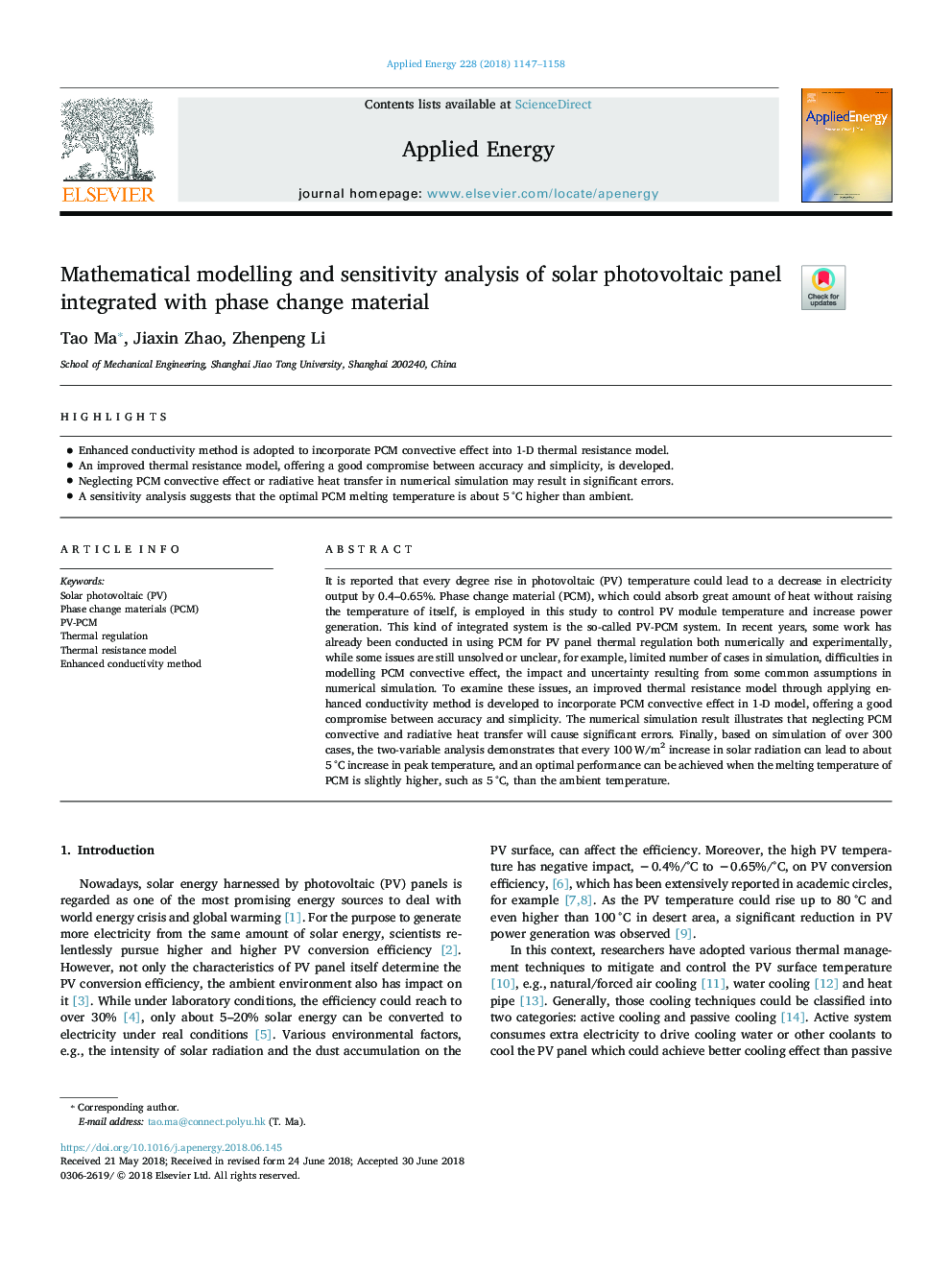| Article ID | Journal | Published Year | Pages | File Type |
|---|---|---|---|---|
| 6679810 | Applied Energy | 2018 | 12 Pages |
Abstract
It is reported that every degree rise in photovoltaic (PV) temperature could lead to a decrease in electricity output by 0.4-0.65%. Phase change material (PCM), which could absorb great amount of heat without raising the temperature of itself, is employed in this study to control PV module temperature and increase power generation. This kind of integrated system is the so-called PV-PCM system. In recent years, some work has already been conducted in using PCM for PV panel thermal regulation both numerically and experimentally, while some issues are still unsolved or unclear, for example, limited number of cases in simulation, difficulties in modelling PCM convective effect, the impact and uncertainty resulting from some common assumptions in numerical simulation. To examine these issues, an improved thermal resistance model through applying enhanced conductivity method is developed to incorporate PCM convective effect in 1-D model, offering a good compromise between accuracy and simplicity. The numerical simulation result illustrates that neglecting PCM convective and radiative heat transfer will cause significant errors. Finally, based on simulation of over 300 cases, the two-variable analysis demonstrates that every 100â¯W/m2 increase in solar radiation can lead to about 5â¯Â°C increase in peak temperature, and an optimal performance can be achieved when the melting temperature of PCM is slightly higher, such as 5â¯Â°C, than the ambient temperature.
Keywords
Related Topics
Physical Sciences and Engineering
Energy
Energy Engineering and Power Technology
Authors
Tao Ma, Jiaxin Zhao, Zhenpeng Li,
